Health workforce metrics pre- and post-2015: a stimulus to public policy and planning
- PMID: 28202047
- PMCID: PMC5312527
- DOI: 10.1186/s12960-017-0190-7
Health workforce metrics pre- and post-2015: a stimulus to public policy and planning
Abstract
Background: Evidence-based health workforce policies are essential to ensure the provision of high-quality health services and to support the attainment of universal health coverage (UHC). This paper describes the main characteristics of available health workforce data for 74 of the 75 countries identified under the 'Countdown to 2015' initiative as accounting for more than 95% of the world's maternal, newborn and child deaths. It also discusses best practices in the development of health workforce metrics post-2015.
Methods: Using available health workforce data from the Global Health Workforce Statistics database from the Global Health Observatory, we generated descriptive statistics to explore the current status, recent trends in the number of skilled health professionals (SHPs: physicians, nurses, midwives) per 10 000 population, and future requirements to achieve adequate levels of health care in the 74 countries. A rapid literature review was conducted to obtain an overview of the types of methods and the types of data sources used in human resources for health (HRH) studies.
Results: There are large intercountry and interregional differences in the density of SHPs to progress towards UHC in Countdown countries: a median of 10.2 per 10 000 population with range 1.6 to 142 per 10 000. Substantial efforts have been made in some countries to increase the availability of SHPs as shown by a positive average exponential growth rate (AEGR) in SHPs in 51% of Countdown countries for which there are data. Many of these countries will require large investments to achieve levels of workforce availability commensurate with UHC and the health-related sustainable development goals (SDGs). The availability, quality and comparability of global health workforce metrics remain limited. Most published workforce studies are descriptive, but more sophisticated needs-based workforce planning methods are being developed.
Conclusions: There is a need for high-quality, comprehensive, interoperable sources of HRH data to support all policies towards UHC and the health-related SDGs. The recent WHO-led initiative of supporting countries in the development of National Health Workforce Accounts is a very promising move towards purposive health workforce metrics post-2015. Such data will allow more countries to apply the latest methods for health workforce planning.
Keywords: Countdown; Data; Densities; Health systems; Health workforce; Low- and middle-income countries; Metrics; Sustainable development goals; Universal health coverage.
Figures
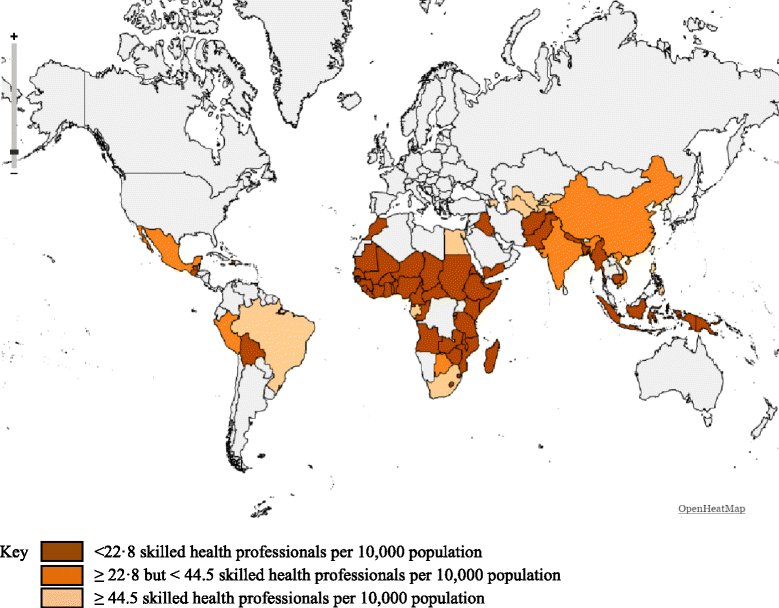
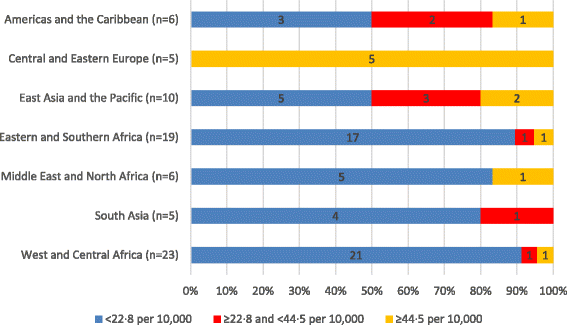
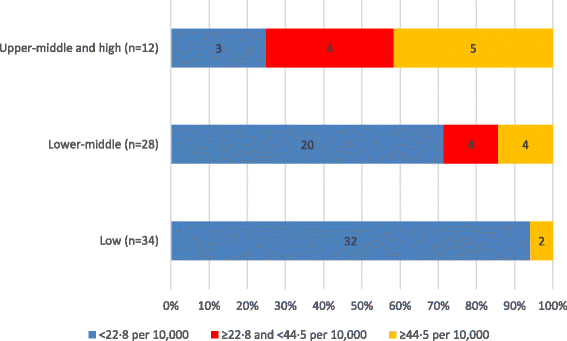
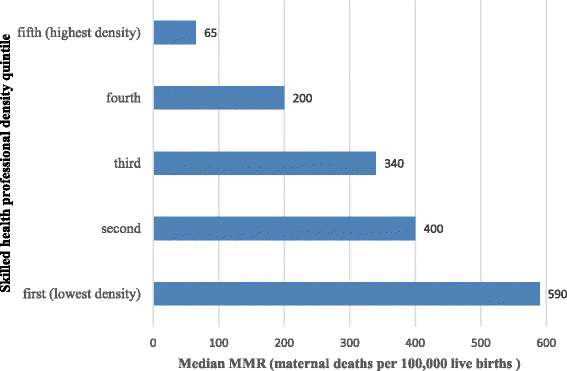

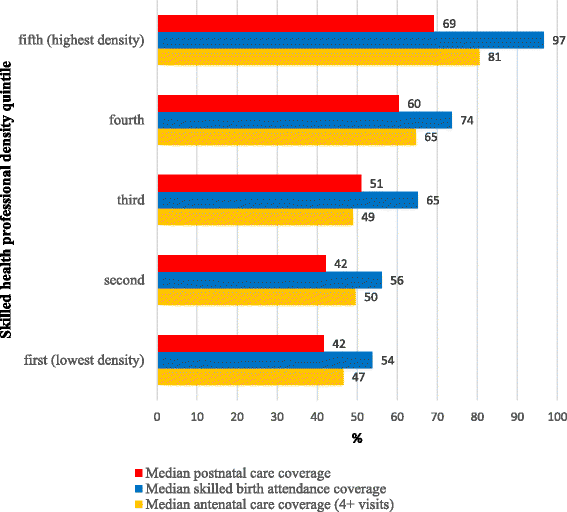
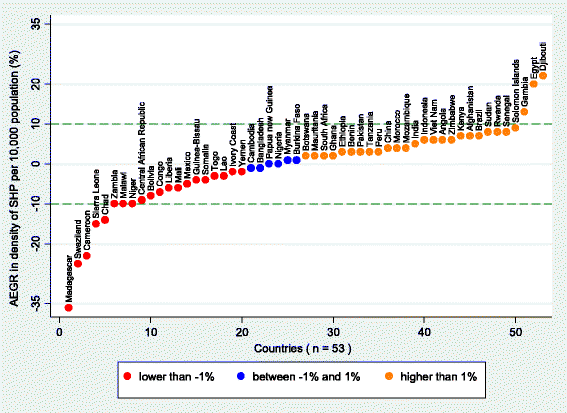
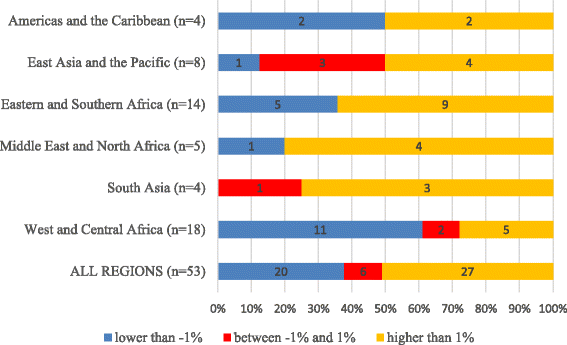
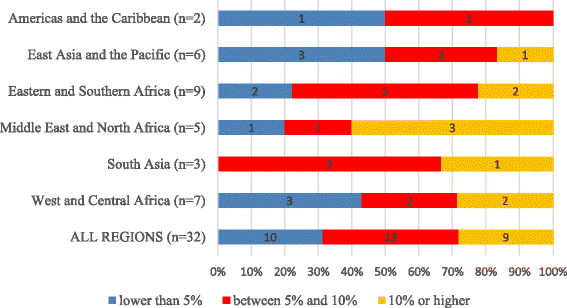
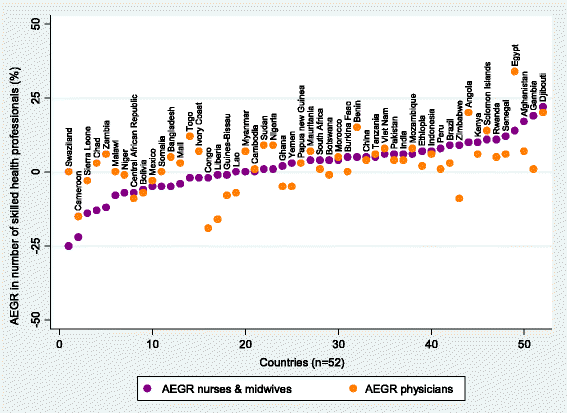
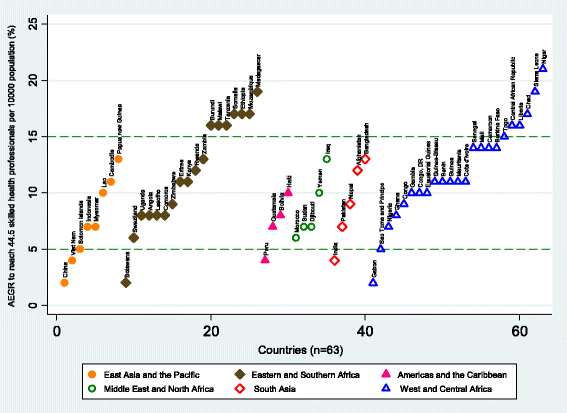
Similar articles
-
Measuring the availability of human resources for health and its relationship to universal health coverage for 204 countries and territories from 1990 to 2019: a systematic analysis for the Global Burden of Disease Study 2019.Lancet. 2022 Jun 4;399(10341):2129-2154. doi: 10.1016/S0140-6736(22)00532-3. Epub 2022 May 23. Lancet. 2022. PMID: 35617980 Free PMC article.
-
Barriers to and strategies for addressing the availability, accessibility, acceptability and quality of the sexual, reproductive, maternal, newborn and adolescent health workforce: addressing the post-2015 agenda.BMC Pregnancy Childbirth. 2018 Feb 20;18(1):55. doi: 10.1186/s12884-018-1686-4. BMC Pregnancy Childbirth. 2018. PMID: 29463210 Free PMC article.
-
Never again? Challenges in transforming the health workforce landscape in post-Ebola West Africa.Hum Resour Health. 2019 Mar 7;17(1):19. doi: 10.1186/s12960-019-0351-y. Hum Resour Health. 2019. PMID: 30845978 Free PMC article.
-
The 2023 Latin America report of the Lancet Countdown on health and climate change: the imperative for health-centred climate-resilient development.Lancet Reg Health Am. 2024 Apr 23;33:100746. doi: 10.1016/j.lana.2024.100746. eCollection 2024 May. Lancet Reg Health Am. 2024. PMID: 38800647 Free PMC article. Review.
-
Tuberculosis.In: Holmes KK, Bertozzi S, Bloom BR, Jha P, editors. Major Infectious Diseases. 3rd edition. Washington (DC): The International Bank for Reconstruction and Development / The World Bank; 2017 Nov 3. Chapter 11. In: Holmes KK, Bertozzi S, Bloom BR, Jha P, editors. Major Infectious Diseases. 3rd edition. Washington (DC): The International Bank for Reconstruction and Development / The World Bank; 2017 Nov 3. Chapter 11. PMID: 30212088 Free Books & Documents. Review.
Cited by
-
Do health policies address the availability, accessibility, acceptability, and quality of human resources for health? Analysis over three decades of National Health Policy of India.Hum Resour Health. 2021 Nov 13;19(1):139. doi: 10.1186/s12960-021-00681-1. Hum Resour Health. 2021. PMID: 34774088 Free PMC article.
-
Inequal distribution of nursing personnel: a subnational analysis of the distribution of nurses across 58 countries.Hum Resour Health. 2022 Mar 5;20(1):22. doi: 10.1186/s12960-022-00720-5. Hum Resour Health. 2022. PMID: 35248061 Free PMC article.
-
Feasibility and acceptability of studying full-time nurse faculty salaries.BMC Nurs. 2024 Jul 29;23(1):511. doi: 10.1186/s12912-024-02186-3. BMC Nurs. 2024. PMID: 39075519 Free PMC article.
-
Visualizing the drivers of an effective health workforce: a detailed, interactive logic model.Hum Resour Health. 2021 Mar 12;19(1):32. doi: 10.1186/s12960-021-00570-7. Hum Resour Health. 2021. PMID: 33706778 Free PMC article.
-
The association between health workforce availability and HIV-program outcomes in Côte d'Ivoire.Hum Resour Health. 2022 Feb 19;20(1):18. doi: 10.1186/s12960-022-00715-2. Hum Resour Health. 2022. PMID: 35183202 Free PMC article.
References
-
- Campbell J, Dussault G, Buchan J, Pozo-Martin F, Guerra Arias M, Leone C, et al. A universal truth: no health without a workforce. Forum report. Third global forum on human resources for health, Recife, Brazil. Geneva: Global Health Workforce Alliance and World Health Organization; 2013.
-
- Nigenda GGJ, Machado MH, Ruiz FF, Carrasco VV, Moline PP, Girardi SS. Towards the construction of health workforce metrics for Latin America and the Caribbean. Hum Resour Health. 2011;9:24. Available from: http://www.human-resources-health.com/content/pdf/1478-4491-9-24.pdf. Accessed 12 Feb 2017. - PMC - PubMed
-
- Centre for Workforce Intelligence. Robust workforce planning framework: an introduction [Internet]. London; 2014. Available from: http://www.cfwi.org.uk/publications/robust-workforce-planning-an-introdu.... Accessed 12 Feb 2017.
-
- Ozgediz D, Hsia R, Weiser T, Gosselin R, Spiegel D, Bickler S, et al. Population health metrics for surgery: effective coverage of surgical services in low-income and middle-income countries. World J Surg. 2009;33:1–5. Available from: http://www.ncbi.nlm.nih.gov/pubmed/18958518. Accessed 12 Feb 2017. - PubMed
-
- WHO, World Bank, USAID . In: Handbook on monitoring and evaluation of human resources for health: with special applications for low- and middle-income countries. Dal Poz MR, Gupta N, Quain E, Soucat AL, editors. Geneva: World Health Organization; 2009.
MeSH terms
Grants and funding
LinkOut - more resources
Full Text Sources
Other Literature Sources

